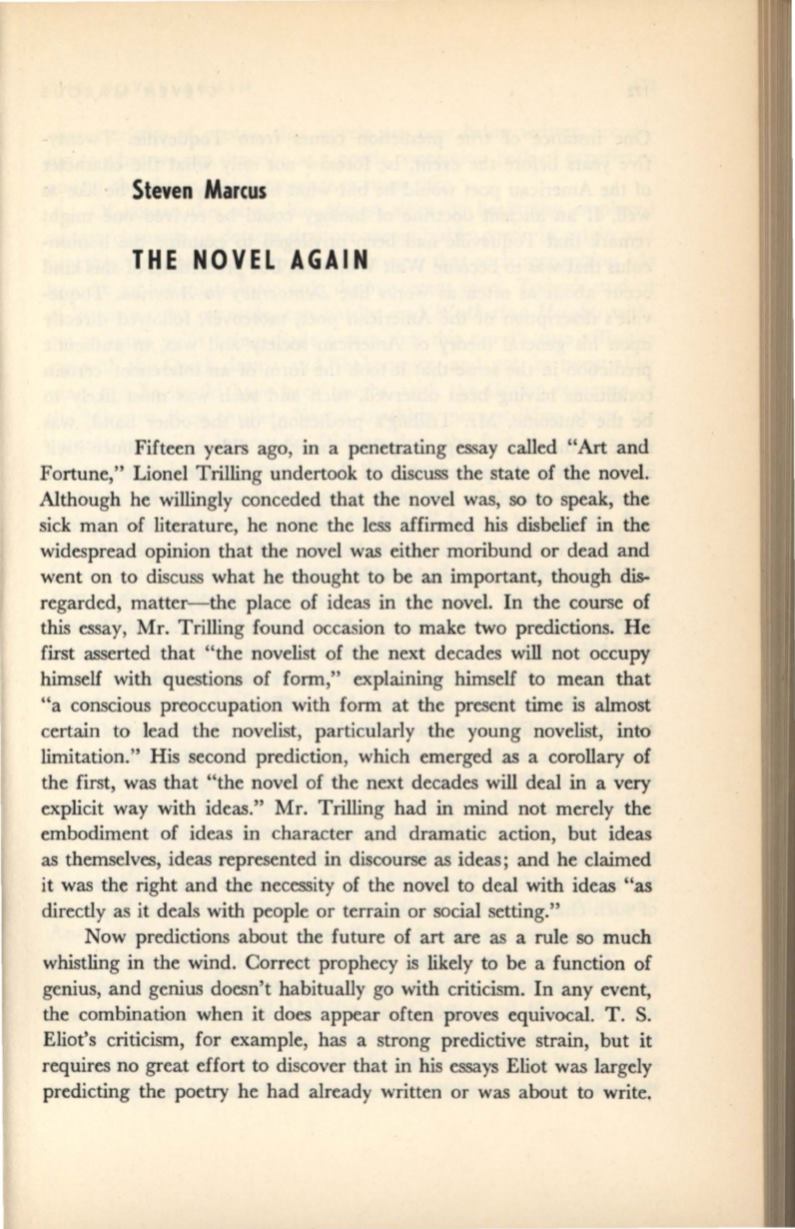
Steven Marcus
THE NOVEL AGAIN
Fifteen years ago, in a penetrating essay called
"Art
and
Fortune," Lionel Trilling undertook to discuss the state of the novel.
Although he willingly conceded that the novel was, so to speak, the
sick man of literature, he none the less affirmed his disbelief in the
widespread opinion that the novel was either moribund or dead and
went on to discuss what he thought to be an important, though dis–
regarded, matter- the place of ideas in the novel. In the course of
this essay, Mr. Trilling found occasion to make two predictions. He
first asserted that "the novelist of the next decades will not occupy
himself with questions of form," explaining himself to mean that
"a conscious preoccupation with form at the present time is almost
certain to lead the novelist, particularly the young novelist, into
limitation." His second prediction, which emerged as a corollary of
the first, was that "the novel of the next decades will deal in a very
explicit way with ideas." Mr. Trilling had in mind not merely the
embodiment of ideas in character and dramatic action, but ideas
as themselves, ideas represented in discourse as ideas; and he claimed
it was the right and the necessity of the novel to deal with ideas "as
directly as it deals with people or terrain or social setting."
Now predictions about the future of art are as a rule so much
whistling in the wind. Correct prophecy is likely to be a function of
genius, and genius doesn't habitually go with criticism. In any event,
the combination when it does appear often proves equivocal. T. S.
Eliot's criticism, for example, has a strong predictive strain, but it
requires no great effort to discover that in his essays Eliot was largely
predicting the poetry he had already written or was about to write.


